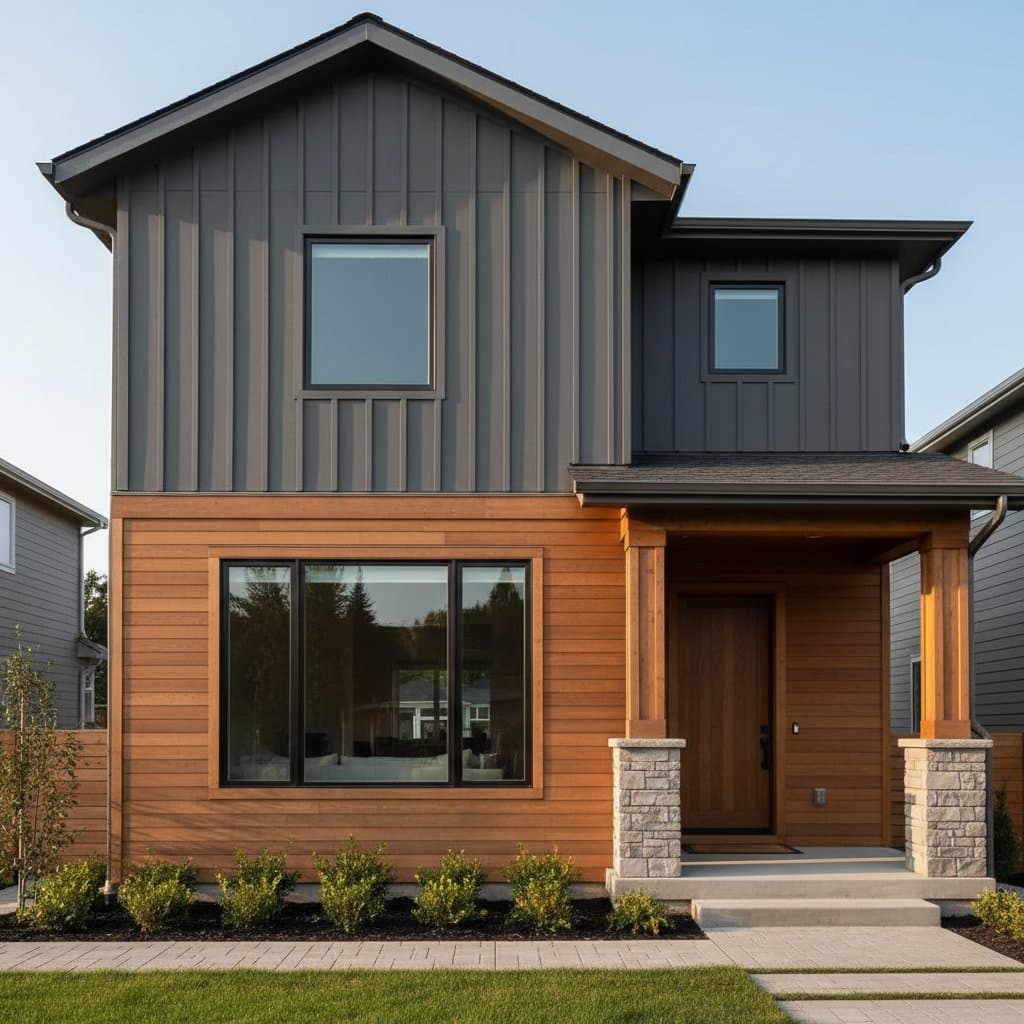Cut Siding Costs by 30 Percent with Strategic Hybrid Mixes
Replacing exterior siding often challenges renovation budgets. Hybrid siding mixes combine multiple materials on the same facade to reduce expenses while preserving curb appeal and structural integrity. Proper planning and material selection can lower total costs by approximately 30 percent, enhance visual interest, and support long-term performance.
Evaluating Costs, Returns, and Key Influences
Hybrid systems incorporate premium materials like fiber cement or engineered wood in limited areas, paired with economical yet reliable options such as vinyl or metal for the remainder. This strategy minimizes the use of costly elements and creates a cohesive, high-end appearance from afar.
Project Scale and Pricing Examples
Costs vary by home size and scope. Consider these installed estimates, which cover removal, surface preparation, and trim work:
- Small-scale renovation: 1,000 to 1,500 square feet, ranging from 9,000 to 14,000 dollars.
- Medium-scale project: 1,800 to 2,500 square feet, ranging from 15,000 to 25,000 dollars.
- Large-scale overhaul: 3,000 square feet or more, ranging from 27,000 to 45,000 dollars.
A complete premium fiber cement installation typically costs 18 to 20 dollars per square foot. In contrast, a hybrid approach averages 11 to 13 dollars per square foot.
Primary Cost Components
Several elements drive expenses in siding projects:
- Removal and disposal of old siding, which comprises 10 to 15 percent of the budget.
- Structural complexity, including multi-story designs, dormers, or uneven surfaces.
- Extent of trim work, which affects labor and material waste.
- Site access challenges, like sloped terrain or narrow pathways, that extend preparation time.
- Material junctions, necessitating proper flashing, support strips, and installation sequencing.
Return on Investment and Buyer Perceptions
Siding upgrades rank highly for return on investment, recouping 65 to 85 percent of costs upon resale according to industry analyses. Hybrids achieve comparable value by positioning premium materials on prominent features, such as front-facing gables or entryways. Prospective buyers form initial judgments based on visible and accessible areas, allowing strategic use of higher-end options to convey quality efficiently.
Key Insight: Prioritize premium siding on eye-level and street-visible sections, then apply compatible budget materials elsewhere. This method elevates aesthetic appeal at about two-thirds of the full premium price.
Enhancing Curb Appeal Through Design
Effective hybrid designs rely on architectural principles like massing and proportion to create harmony. The objective centers on highlighting the home's form through subtle contrasts rather than ornamental excess.
Aligning with Architectural Massing
Segment the exterior along natural divisions, such as roof edges, projections, or porch outlines. Reserve premium materials for upper portions or central focal points. Refrain from interrupting a single wall plane with material changes unless separated by trim or flashing for a defined boundary.
Coordinating Colors and Textures
Choose a unified color palette and adjust shades for depth. Employ deeper hues at the foundation for grounding, with progressively lighter tones ascending to suggest greater height. Ensure undertones align between materials to prevent visual discord in varying light conditions.
Focusing on Entryways and Illumination
Apply textured premium elements around doorways to strengthen welcoming impressions. Integrate slim vertical lights that follow trim lines, guiding attention upward. Opt for durable metal or composite house numbers that provide clear contrast against the siding backdrop.
Key Insight: Treat the facade as a unified artwork. Leverage contrasts to establish visual priority, aligning texture shifts with the home's inherent lines for a polished, purposeful look.
Ensuring Durability Through Maintenance
Well-maintained hybrid siding endures for decades. Success depends on routine care tailored to each material's requirements.
Routine Cleaning Protocols
Address surface care seasonally:
- For vinyl: Clean with mild soap and a soft brush biannually.
- For fiber cement: Rinse once yearly; recoat every 10 to 12 years based on existing finish.
- For engineered wood: Examine coatings each spring and repair any exposed edges.
- For metal: Use gentle water pressure, steering clear of abrasives.
Limit pressure washing to under 1,500 psi to safeguard joints from water penetration.
Scheduled Inspections
Conduct comprehensive reviews every six months, targeting:
- Junctions at trim pieces.
- Exposed fastener points.
- Sealed edges.
- Shifts from foundation to roofline.
Prompt identification of issues like flaking paint or buckling panels averts moisture-related deterioration.
Implementing Safeguards
Install kick-out flashing at roof-wall intersections to redirect water flow. Renew deteriorated caulk using sealants designed for siding expansion. Maintain a 12-inch clearance between vegetation and walls to promote ventilation.
Upholding Warranties
Manufacturers often mandate proof of upkeep for coverage. Document inspections with photographs and records. Such evidence bolsters claims during potential issues, securing long-term protection.
Key Insight: Consistent maintenance safeguards warranties and enhances marketability. A pristine hybrid exterior demonstrates diligent ownership to potential purchasers.
Adapting and Sustaining Your Siding Investment
Hybrid configurations provide adaptability amid changing preferences or financial needs. Owners refresh palettes or repair isolated areas without full overhauls. This segmented design also simplifies responses to weather events, enabling targeted replacements.
Practical Strategies for Optimal Results
- Draft facade sketches prior to procurement; employ software or graph paper for transition previews.
- Maintain uniform horizontal divisions across elevations to prevent disjointed views.
- Balance textured panels with sleek trim for equilibrium.
- Apply sealant to all field cuts pre-installation, supplementing factory treatments.
- Capture images of underlying barriers and flashings before enclosure, aiding future documentation.
Resolving Frequent Challenges
- Warping in vinyl adjacent to dark sections: Switch to paler shades or incorporate ventilated underlayment to mitigate thermal buildup.
- Adhesion failure on engineered wood: Lightly abrade, apply adhesion-promoting primer, then layer two topcoats.
- Expansion sounds in metal: Use accommodating fasteners or sliding connections to manage shifts.
- Inconsistent fading: Uniformly cleanse, followed by a unified recoat across the affected plane.
Strategic hybrid siding delivers enduring value, blending economy with elegance for homes that stand out and endure.

